
Cover Photo: peach blossom and willow branches 桃花柳枝, by Yun ShouPing. Check Ancient Chinese Flower Paintings by Yun Shou Ping 恽寿平 for more of his art works.
After our previous Mustard Seed Manual posts about how to paint flowers, this post has quite a few examples on how to paint flowers with the techniques you have learned from our previous posts. To be specific, in this post, you will see how to apply your techniques to paint narcissus, lotus, morning glory, big leaf hydrangea, wisteria flower, and rhododendra.
Skills to review:
paint fine lines with detailed gongbi brush and white cloud brush. In our previous post on Floral Composition, we talked about a technique called ‘strength goes through the paper’.
- 力透纸背 literally it means ‘strength goes through the paper’. When talking about painting or calligraphy, it actually means that you have to control the brush well enough to pass your strength via brush to the paper and this technique helps the line to be powerful and beautiful. For example, when painting animal claws, we are always asked to do a sketch with brush and black ink. The sketch is small but it could make people feel the claws are vivid and strong. Of course, good quality paper will also help reach such effects. This technique is very important for calligraphers.
Video Clip Map:

9:35, narcissus.
Start painting from pollen. When painting leaves, we change to big brush: white cloud brush would be good.
Brushes: gongbi detail or small weasel 0603Ws, white cloud.
Colours:
- pearl white, when apply colours, please avoid black lines. Then use malachite and gamboge yellow to make light green. Use this green to add a bit colour on the white petals.
- cinnabar red and gamboge to make orange. This is for the pollen.
- eosin red.
- mix Gamboge yellow plant colour and ochre brown to decorate leaves.
18:55, lotus
Use big white cloud brush to paint lines. This can be a bit difficult for beginners to control. Our recommendation would be try to practice for a while with your big white cloud brush till you are used to its size. And then you can try to start painting lines.
Colours: first use pearl white to paint all the petals. When the pearl white paint is still moist, use light eosin red to paint lines on petals.
Gamboge yellow plant colour plus ochre brown and a little bit black ink for the pollen.
For flower stalk, you can mix malachite green mineral colour and Gamboge yellow plant colour and ochre brown.
Use Gamboge yellow plant colour plus pearl white to make light yellow to paint dots with detailed gongbi brush or long/ pointed brush.

26:50, morning glory
Use 0903ws gongbi detail weasel brush to paint fine lines. Then use white cloud brush to paint flowers.
Colour: indigo plant colour, pearl white. First use indigo plant colour to paint all the petals. When the indigo colour is still moist, use white to paint from inside out. Use a bit more water.
Gamboge yellow plant colour plus pearl white for pollen.
Gamboge yellow plant colour plus indigo to make grass green for leaves.
Use a lot of water, then paint from inside out.
31:35, big leaf hydrangea
Brush: use big white cloud to paint lines.
Colour: use pearl white to paint the base while avoiding the black lines.
Gamboge yellow plant colour, indigo, malachite green: add a bit decorative colours on the petals.
36:10, wisteria flower

Brush: use big white cloud.
Colour: Indigo plus Carthamin safflower rouge red plant colour to make nice purple. (more indigo than rouge). Add a bit pearl white. Then you can get very elegant natural purple colour.
43:45, rhododendra
Colour: eosin red with a lot of water.
Red add a bit light black to make it dark red.
Use thick pearl white add with Gamboge plant colour to make light yellow. Then add this light yellow to paint pollen while the red paint is still moist.
Colour Tips:
Please review our Inkston Chinese Painting Colour Chart to review some basic ways to mix colours. Also, to understand better how Chinese water-based natural pigments functions, please refer to the introduction article on Chinese Colours. The pigments used for this session include: pearl white, malachite green, ochre brown, red, eosin red, Carthamin safflower rouge red, Gamboge yellow plant colour, cinnabar red, indigo plant colour, pine soot black ink.
-
Professional 12 Colours Set A 5g * 12
 How to use: dissolve the colour chips in clean warm water. Then it is ready for use. Feature: The chips include sap already. The colour is very fine and pure. Colour is profound and endurable. Storage: keep it in dry, clean, and dark place. The longer the colour is preserved, the better the quality becomes. Special Note: this set contains very fine professional Chinese…$132.46
How to use: dissolve the colour chips in clean warm water. Then it is ready for use. Feature: The chips include sap already. The colour is very fine and pure. Colour is profound and endurable. Storage: keep it in dry, clean, and dark place. The longer the colour is preserved, the better the quality becomes. Special Note: this set contains very fine professional Chinese…$132.46
Brand: Jiang SiXu Tang 姜思序堂
Materials: mineral pigment, plant pigment, Resin
Packaging: glass bottle
Recommend to: Advanced Level, Medium Level, Professionals
Suitable for: Chinese Painting, 工笔画 Gongbi Painting
Product Size: 2 × 2 × 5 cm
Product Weight: 60
Shipping size: 30.5 × 25.5 × 53.5 cm


Professional 12 Colours Set A 5g * 12
$132.46 Add to cart -
天字藤黄 Gamboge Yellow Plant Color 5g



Brand: Jiang SiXu Tang 姜思序堂
Colour: 藤黄 Gamboge Saffron/Mustard Yellow Herbal Colour
Materials: Gamboge
Packaging: glass bottle
Recommend to: Advanced Level, Beginners, Medium Level, Professionals
Suitable for: Chinese Painting
Product Weight: 5
Shipping size: 2 × 2 × 5 cm


天字藤黄 Gamboge Yellow Plant Color 5g
$10.90 (USD) Add -
曙红 Eosin Red Industrial Color 5g



Brand: Jiang SiXu Tang 姜思序堂
Colour: Eosin 曙红
Materials: industrial pigment
Packaging: glass bottle
Recommend to: Advanced Level, Beginners, Medium Level, Professionals
Suitable for: Chinese Painting
Product Weight: 5
Shipping size: 2 × 2 × 5 cm


曙红 Eosin Red Industrial Color 5g
$7.73 (USD) Add -
特级花青膏 Extra Fine Indigo Plant Color 5g


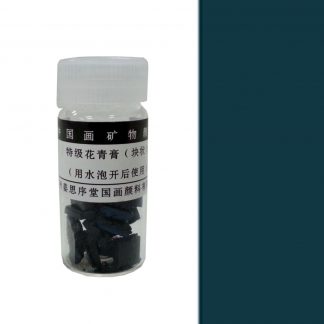
Brand: Jiang SiXu Tang 姜思序堂
Colour: Indigo 花青
Materials: Indigo
Packaging: glass bottle
Recommend to: Advanced Level, Beginners, Medium Level, Professionals
Suitable for: Chinese Painting
Product Weight: 5
Shipping size: 2 × 2 × 5 cm


特级花青膏 Extra Fine Indigo Plant Color 5g
$17.41 (USD) Add -
石绿 Malachite Green Mineral Color 5g



Brand: Jiang SiXu Tang 姜思序堂
Colour: Malachite Green 石绿
Materials: Malachite
Packaging: glass bottle
Recommend to: Advanced Level, Beginners, Medium Level, Professionals
Suitable for: Chinese Painting
Product Weight: 5
Shipping size: 2 × 2 × 5 cm


石绿 Malachite Green Mineral Color 5g
$11.69 (USD) Add -
胭脂膏 Carthamin Safflower Rouge Red Plant Color 5g



Brand: Jiang SiXu Tang 姜思序堂
Materials: Safflower
Recommend to: Advanced Level, Beginners, Medium Level, Professionals
Suitable for: Chinese Painting
Product Weight: 5
Shipping size: 5.5 × 3.5 × 1.5 cm


胭脂膏 Carthamin Safflower Rouge Red Plant Color 5g
$8.51 (USD) Add -
蛤白膏 Pearl White Mineral Colour 5g



Brand: Jiang SiXu Tang 姜思序堂
Colour: White 钛白
Materials: Resin, 蛤粉 há fěn Clam shell or Pearl White
Packaging: glass bottle
Recommend to: Advanced Level, Beginners, Medium Level, Professionals
Suitable for: Chinese Painting
Product Weight: 5
Shipping size: 2 × 2 × 5 cm


蛤白膏 Pearl White Mineral Colour 5g
$11.98 (USD) Add -
轻胶朱膘 Cinnabar Red Mineral Colour 5g



Brand: Jiang SiXu Tang 姜思序堂
Colour: Cinnabar Red 朱膘
Materials: Cinnabar
Packaging: glass bottle
Recommend to: Advanced Level, Beginners, Medium Level, Professionals
Suitable for: Chinese Painting
Product Weight: 5
Shipping size: 2 × 2 × 5 cm


轻胶朱膘 Cinnabar Red Mineral Colour 5g
$12.16 (USD) Add -
轻胶赭石 Low Resin Ochre Brown Mineral Color 5g



Brand: Jiang SiXu Tang 姜思序堂
Colour: 赭石 Ochre Brown
Materials: Ochre brown
Packaging: glass bottle
Recommend to: Advanced Level, Beginners, Medium Level, Professionals
Suitable for: Chinese Painting
Product Weight: 5
Shipping size: 2 × 2 × 5 cm


轻胶赭石 Low Resin Ochre Brown Mineral Color 5g
$8.36 (USD) Add
Brushes needed:
Like almost all the flower tutorials we have posted so far, weasel gongbi detail brush and white cloud brushes are used in this session too. In fact, these two types of brushes are probably two of the most widely used brushes for Chinese flower/ bird paintings. In our previous issues, you can find our article on how to choose painting brush.
-
Inkston 0603Ws 经典狼毫小 Small Classic Lang Hao Wolf Brush





Brand: inkston
Maker: Xu Shi Chun
Materials: Weasel Hair, Wood
Packaging: silk sleeve
Recommend to: Advanced Level, Beginners, Medium Level, Professionals
Suitable for: 小楷 3 – 5 cm calligraphy, 工笔画 Gongbi Painting, 楷书 KaiShu Regular Script calligraphy, 花鸟画 Flower and Bird painting, 行书 xíngshū semi-cursive script
Brush Hair Size: 2.1 * 0.5 cm
Product Size: 24 × 0.65 × 0.65 cm




Inkston 0603Ws 经典狼毫小 Small Classic Lang Hao Wolf Brush
$25.70 (USD) Add -
Inkston 0903Ws 花枝俏 “Flower Brush” Extra Fine Detail LangHao Wolf brush




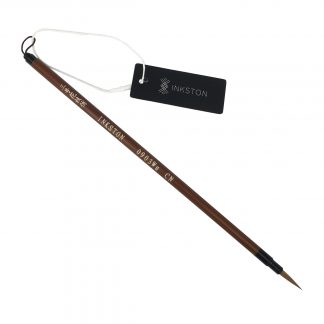
Brand: inkston
Maker: Xu Shi Chun
Materials: Bamboo, Weasel Hair
Packaging: silk sleeve
Recommend to: Advanced Level, Medium Level, Professionals
Suitable for: 1 – 1.5 cm diameter calligraphy, 工笔画 Gongbi Painting, 花鸟画 Flower and Bird painting
Brush Hair Size: 0.35 * 1.9 cm
Product Size: 24.5 × 0.7 × 0.7 cm
Product Weight: 5.2
Shipping size: 27.5 × 5 × 0.7 cm




Inkston 0903Ws 花枝俏 “Flower Brush” Extra Fine Detail LangHao Wolf brush
$10.35 (USD) Add -
Inkston WsWl 古法白云 GuFa BaiYun “Traditional White Cloud ” 兼毫 Jian Hao Combination Brush Set



$77.69$66.04
Brand: inkston
Maker: Xu Shi Chun
Materials: Bamboo, JianHao hair
Packaging: silk sleeve
Recommend to: Advanced Level, Beginners, Medium Level, Professionals
Suitable for: Calligraphy, Chinese Painting, 写意画 Freehand Painting, 楷书 KaiShu Regular Script calligraphy, 花鸟画 Flower and Bird painting, 草书 CaoShu "grass" Cursive Script calligraphy
Brush Hair Size: 4 * 0.9 cm, 3.6 * 0.8 cm, 3.3 * 0.7 cm
Product Size: 28 x 1,1 x 1,1 cm, 28 x 1 x 1 cm, 26,2 x 0,9 x 0,9 cm
Product Weight: 16
Shipping size: 96.5 × 8 × 7 cm


Inkston WsWl 古法白云 GuFa BaiYun “Traditional White Cloud ” 兼毫 Jian Hao Combination Brush Set
-15%$77.69$66.04 Add to cart -
Red Star 一级白云 BaiYun White Cloud JianHao Brush Set



$39.65$35.69
Brand: Red Star 红星
Materials: Weasel Hair, Wood, Wool
Recommend to: Advanced Level, Beginners, Medium Level
Suitable for: Chinese Painting, 楷书 KaiShu Regular Script calligraphy, 草书 CaoShu "grass" Cursive Script calligraphy
Product Weight: 12.5
Shipping size: 105 × 15 × 15 cm


Red Star 一级白云 BaiYun White Cloud JianHao Brush Set
-10%$39.65$35.69 Add to cart
Xuan Papers:
You can choose any of our Xuan papers made for flower/ bird paintings. Besides raw/ un-cooked Xuan papers, it would be interesting to also try half-cooked and cooked Xuan papers. 🙂 If you are not beginner any more, please choose the Xuan paper type which suits you most. You can refer to our Inkston Xuan Paper Buyer’s Guide which helps you select Xuan papers.
-
Half Cooked Xuan Paper



Brand: inkston
Materials: Alum, 棉料 Mian Liao


Half Cooked Xuan Paper
$33.93 – $234.64 Choose -
INKSTON Expert Flower/ Bird Xuan Paper





Brand: inkston
Maker: Inkston
Materials: 棉料 Mian Liao
Recommend to: Advanced Level, Beginners, Medium Level, Professionals
Suitable for: 花鸟画 Flower and Bird painting




INKSTON Expert Flower/ Bird Xuan Paper
$23.83 – $238.38 Choose -
INKSTON Extra Fine Flower/ Bird Xuan Paper


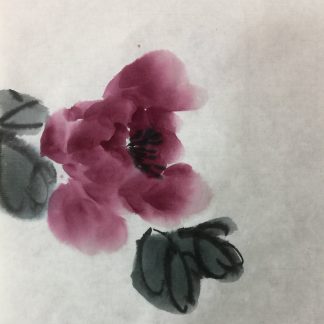
Brand: inkston
Materials: 棉料 Mian Liao
Suitable for: 花鸟画 Flower and Bird painting


INKSTON Extra Fine Flower/ Bird Xuan Paper
$32.03 – $226.23 Choose -
INKSTON Gongbi Plus, Sized Xuan Paper


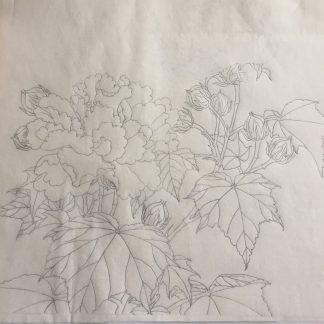
Brand: inkston
Materials: Eulaliopsis binata, Mica


INKSTON Gongbi Plus, Sized Xuan Paper
$39.55 – $198.51 Choose
Video
Mustard Seed Garden Video tutorial by Chinese artist Wu Peng 吴蓬, who was born in 1941 and currently researcher of Shanghai Calligraphy and Painting Institute. He is especially famous for calligraphy (including oracle bone script) and flower paintings.
【芥子园画谱技法讲座】 24(三)花卉翎毛(01 02)草本花头、藤本花头
Pictures
Related pictures from the Mustard Seed Garden book.
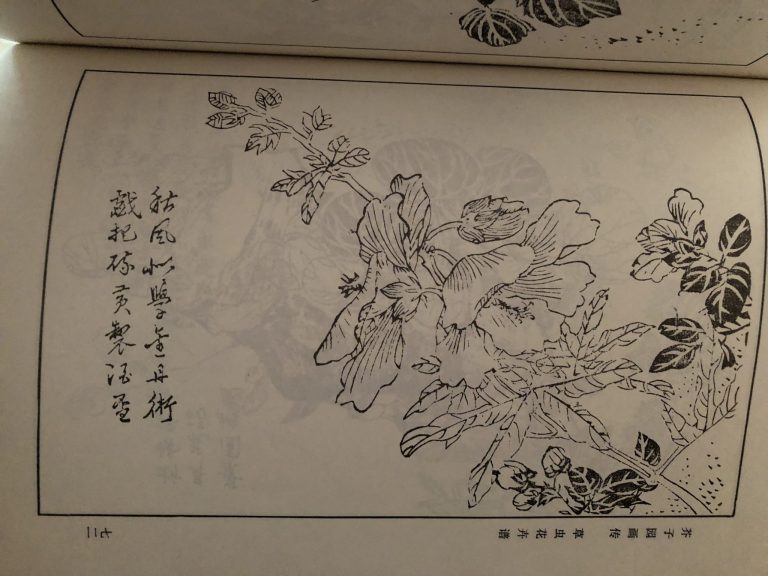







Materials
-
Inkston 0200WsWl 精品兼毫 Extra-large Fine Jian Hao Combination Brush



Brand: inkston
Maker: Xu Shi Chun
Materials: JianHao hair
Packaging: silk sleeve
Suitable for: 写意画 Freehand Painting, 花鸟画 Flower and Bird painting, 草书 CaoShu "grass" Cursive Script calligraphy
Brush Hair Size: 1.4 * 6.2 cm


Inkston 0200WsWl 精品兼毫 Extra-large Fine Jian Hao Combination Brush
Sale! $31.76 (USD) Add -
Inkston 0305WsWl 北海云雾 Beihai Yunwu “North lake mist” Extra-large 兼毫 Jian Hao Combination Brush



Brand: inkston
Maker: Xu Shi Chun
Materials: JianHao hair
Packaging: silk sleeve
Suitable for: 写意画 Freehand Painting, 花鸟画 Flower and Bird painting, 草书 CaoShu "grass" Cursive Script calligraphy, 行书 xíngshū semi-cursive script
Shipping size: 30.5 × 1.4 × 1.4 cm
Shipping weight: 50 g


Inkston 0305WsWl 北海云雾 Beihai Yunwu “North lake mist” Extra-large 兼毫 Jian Hao Combination Brush
$19.65 (USD) Add -
Inkston 0403Ws 北尾狼毫联笔 Beiwei LangHao Wolf brush



Brand: inkston
Maker: Xu Shi Chun
Materials: Weasel Hair, Wood
Packaging: silk sleeve
Suitable for: 写意画 Freehand Painting, 山水画 ShanShui Landscape Painting, 楷书 KaiShu Regular Script calligraphy, 花鸟画 Flower and Bird painting, 草书 CaoShu "grass" Cursive Script calligraphy, 行书 xíngshū semi-cursive script
Brush Hair Size: 1 * 4.4 cm
Shipping size: 30.5 × 1.3 × 1.3 cm
Shipping weight: 31.5 g


Inkston 0403Ws 北尾狼毫联笔 Beiwei LangHao Wolf brush
$37.38 (USD) Add -
Inkston 0601Ws 经典狼毫大 Large Classic Lang Hao Wolf Brush



Brand: inkston
Maker: Xu Shi Chun
Materials: Weasel Hair, Wood
Packaging: silk sleeve
Suitable for: 中楷 3-7 cm calligraphy, 大楷 3-9 cm calligraphy, 楷书 KaiShu Regular Script calligraphy, 花鸟画 Flower and Bird painting
Brush Hair Size: 2.8 * 0.7 cm
Product Size: 25 × 0.9 × 0.9 cm


Inkston 0601Ws 经典狼毫大 Large Classic Lang Hao Wolf Brush
$29.33 (USD) Add -
Inkston 0602Ws 经典狼毫中 Medium Classic Lang Hao Wolf Brush


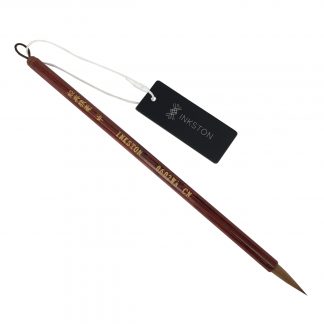
Brand: inkston
Maker: Xu Shi Chun
Materials: Weasel Hair, Wood
Packaging: silk sleeve
Recommend to: Advanced Level, Beginners, Medium Level, Professionals
Suitable for: 中楷 3-7 cm calligraphy, 山水画 ShanShui Landscape Painting, 工笔画 Gongbi Painting, 楷书 KaiShu Regular Script calligraphy, 花鸟画 Flower and Bird painting, 行书 xíngshū semi-cursive script
Brush Hair Size: 2.5 * 0.6 cm
Product Size: 24.5 × 0.8 × 0.8 cm


Inkston 0602Ws 经典狼毫中 Medium Classic Lang Hao Wolf Brush
$27.88 (USD) Add -
Inkston 0603Ws 经典狼毫小 Small Classic Lang Hao Wolf Brush





Brand: inkston
Maker: Xu Shi Chun
Materials: Weasel Hair, Wood
Packaging: silk sleeve
Recommend to: Advanced Level, Beginners, Medium Level, Professionals
Suitable for: 小楷 3 – 5 cm calligraphy, 工笔画 Gongbi Painting, 楷书 KaiShu Regular Script calligraphy, 花鸟画 Flower and Bird painting, 行书 xíngshū semi-cursive script
Brush Hair Size: 2.1 * 0.5 cm
Product Size: 24 × 0.65 × 0.65 cm




Inkston 0603Ws 经典狼毫小 Small Classic Lang Hao Wolf Brush
$25.70 (USD) Add -
Inkston 0801SW 豹狼毫 Bao Lang Hao Large Leopard Wolf Brush (Squirrel/Weasel)



Brand: inkston
Maker: Xu Shi Chun
Materials: Weasel Hair, Wood
Packaging: silk sleeve
Recommend to: Advanced Level, Medium Level, Professionals
Suitable for: Calligraphy, Shi Lu 石鲁 Landscape Painting Style, 山水画 ShanShui Landscape Painting, 楷书 KaiShu Regular Script calligraphy, 花鸟画 Flower and Bird painting, 草书 CaoShu "grass" Cursive Script calligraphy, 行书 xíngshū semi-cursive script
Brush Hair Size: 6 * 1.5 cm
Product Size: 34 × 2 × 2 cm


Inkston 0801SW 豹狼毫 Bao Lang Hao Large Leopard Wolf Brush (Squirrel/Weasel)
$49.00 (USD) Add -
Inkston 0901WsWl 古法大白云 GuFa Da BaiYun “Traditional White Cloud Large” 兼毫 Jian Hao Combination Brush



Brand: inkston
Maker: Xu Shi Chun
Materials: JianHao hair
Packaging: silk sleeve
Recommend to: Advanced Level, Beginners, Medium Level, Professionals
Suitable for: Calligraphy, 写意画 Freehand Painting, 楷书 KaiShu Regular Script calligraphy, 花鸟画 Flower and Bird painting, 草书 CaoShu "grass" Cursive Script calligraphy
Brush Hair Size: 4 * 0.9 cm
Product Size: 28 × 1.1 × 1.1 cm
Product Weight: 22.3
Shipping size: 35 × 3 × 3 cm


Inkston 0901WsWl 古法大白云 GuFa Da BaiYun “Traditional White Cloud Large” 兼毫 Jian Hao Combination Brush
$28.76 (USD) Add -
Inkston 0902WsWl 古法中白云 GuFa Zhong BaiYun “Traditional Small White Cloud Medium” 兼毫 Jian Hao Combination Brush



Brand: inkston
Maker: Xu Shi Chun
Materials: Bamboo, JianHao hair
Packaging: silk sleeve
Recommend to: Advanced Level, Beginners, Medium Level, Professionals
Suitable for: Calligraphy, 写意画 Freehand Painting, 楷书 KaiShu Regular Script calligraphy, 花鸟画 Flower and Bird painting, 草书 CaoShu "grass" Cursive Script calligraphy
Brush Hair Size: 3.6 * 0.8 cm
Product Size: 28 × 1 × 1 cm
Product Weight: 13
Shipping size: 35 × 2 × 2 cm


Inkston 0902WsWl 古法中白云 GuFa Zhong BaiYun “Traditional Small White Cloud Medium” 兼毫 Jian Hao Combination Brush
$25.99 (USD) Add -
Inkston 0903Ws 花枝俏 “Flower Brush” Extra Fine Detail LangHao Wolf brush





Brand: inkston
Maker: Xu Shi Chun
Materials: Bamboo, Weasel Hair
Packaging: silk sleeve
Recommend to: Advanced Level, Medium Level, Professionals
Suitable for: 1 – 1.5 cm diameter calligraphy, 工笔画 Gongbi Painting, 花鸟画 Flower and Bird painting
Brush Hair Size: 0.35 * 1.9 cm
Product Size: 24.5 × 0.7 × 0.7 cm
Product Weight: 5.2
Shipping size: 27.5 × 5 × 0.7 cm




Inkston 0903Ws 花枝俏 “Flower Brush” Extra Fine Detail LangHao Wolf brush
$10.35 (USD) Add -
Inkston 0903WsWl 古法小白云 GuFa Xiao BaiYun “Traditional White Cloud Small” 兼毫 Jian Hao Combination Brush



Brand: inkston
Maker: Xu Shi Chun
Materials: Bamboo, JianHao hair
Packaging: silk sleeve
Recommend to: Advanced Level, Beginners, Medium Level, Professionals
Suitable for: Calligraphy, Chinese Painting, 写意画 Freehand Painting, 楷书 KaiShu Regular Script calligraphy, 花鸟画 Flower and Bird painting, 草书 CaoShu "grass" Cursive Script calligraphy
Brush Hair Size: 3.3 * 0.7 cm
Product Size: 26.2 × 0.9 × 0.9 cm
Product Weight: 16
Shipping size: 26.5 × 3 × 2 cm


Inkston 0903WsWl 古法小白云 GuFa Xiao BaiYun “Traditional White Cloud Small” 兼毫 Jian Hao Combination Brush
$22.95 (USD) Add -
INKSTON Expert Flower/ Bird Xuan Paper





Brand: inkston
Maker: Inkston
Materials: 棉料 Mian Liao
Recommend to: Advanced Level, Beginners, Medium Level, Professionals
Suitable for: 花鸟画 Flower and Bird painting




INKSTON Expert Flower/ Bird Xuan Paper
$23.83 – $238.38 Choose
Books
-
Chieh Tzu Yuan Manual of the Mustard Seed Garden 芥子园画传 Set of 4 Volumes



Brand: inkston
Product Weight: ,,,
Shipping size: 98 × 68.6 × 11.8 cm


Chieh Tzu Yuan Manual of the Mustard Seed Garden 芥子园画传 Set of 4 Volumes
$66.10 Add to cart -
Chieh Tzu Yuan Manual of the Mustard Seed Garden 芥子园画传 single book



Brand: inkston


Chieh Tzu Yuan Manual of the Mustard Seed Garden 芥子园画传 single book
$13.80 – $19.25 Choose
